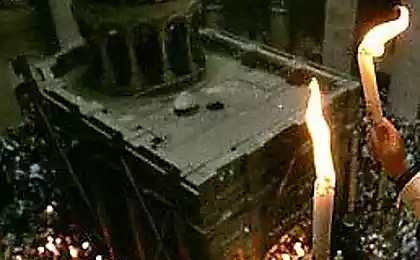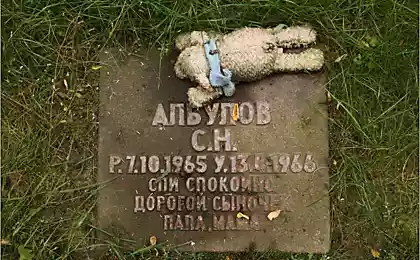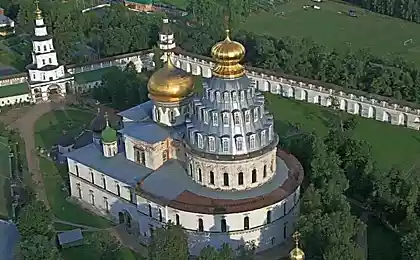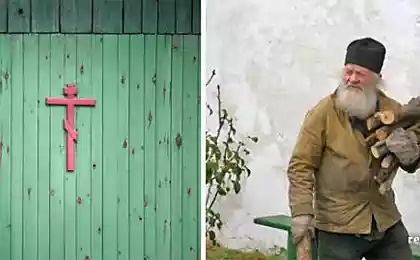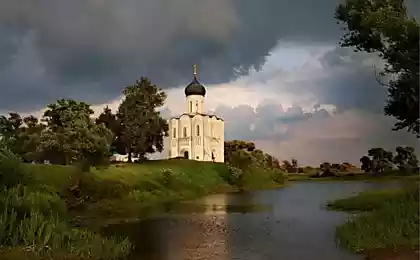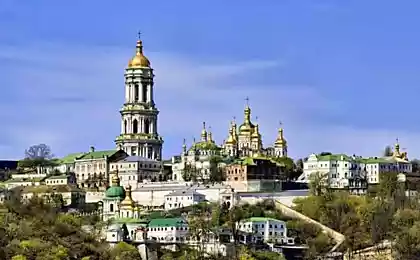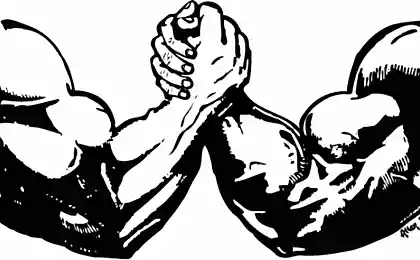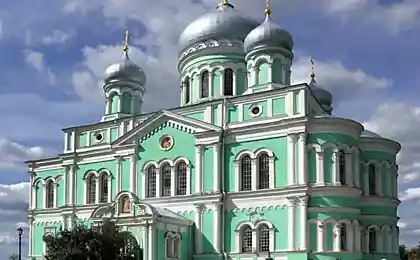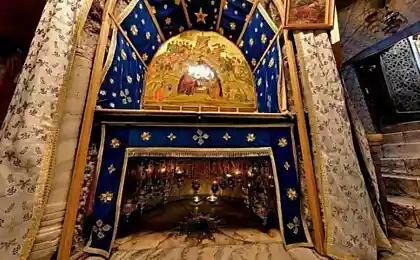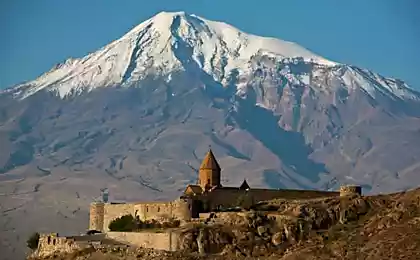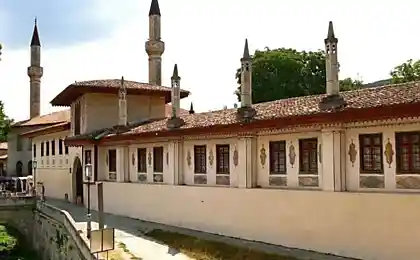452
Rock monastery in Bakhchisarai
No one still knows the exact time of Foundation of the monastery. Presumably, his creation began from the time when in the VIII century from the Byzantine Empire fled the monks-iconodules. In Crimea, they got a deep gorge Maryam-Dere, something resembling them in shape and the wild beauty of mount Athos, and the monks decided to stay here. They were carved out of the mountain steeps cells and a new Church, which has long been the center of religious life in the Crimea.
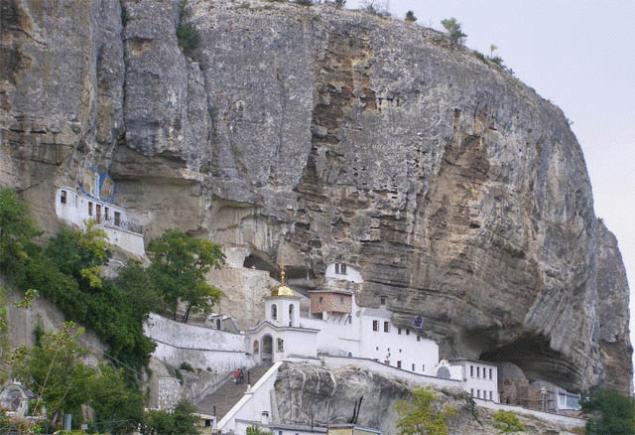
The monks who settled on the steep cliffs, was not looking for privacy, and had been a missionary and brought to the local tribes, the light of Divine Revelation. It seems that a higher power really was guarding the monastery, which had survived the earthquake, and the Turkish invasion, and the attacks of foreigners. Soon, near the monastery arose the capital of the Crimean khanate – the beautiful city of Bakhchisarai. By the early twentieth century Uspensky monastery has grown and consisted of five churches and numerous monk cells.
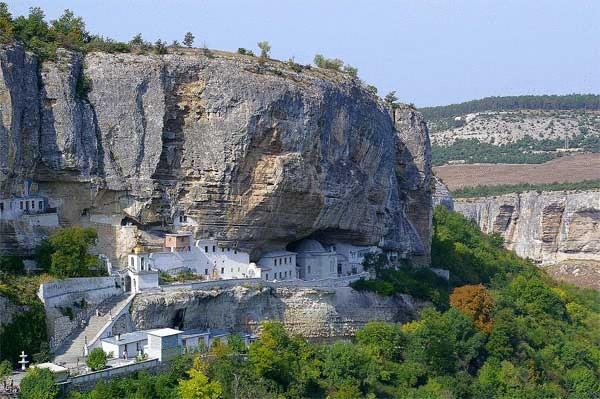
Here the rocks were hollowed out of the sacristy, a refectory, a library with a rich collection of spiritual books and manuscripts. There was also a hotel for pilgrims, two fountains for the coolness and delight of the eyes, also, two Church cemetery. The cemetery, one military, the other fraternal was situated in the rocks in three tiers. The top tier was decorated with marvelous wall paintings on various biblical subjects. They were up in the rocks and to see them, we had to climb a steep staircase of 83 steps. And from the height it was possible to admire Gefsimansky chapel and a wonderful orchard, which was broken by diligent monks. With the arrival of the Bolsheviks in 1921, the assumption monastery was closed and transferred to a labor camp. Unique buildings of world-historical significance, was taken for building materials and part of the temples were destroyed. Did not spare the rock monastery and the earthquake in 1927. That did not destroy nature and people, have rendered service during the great Patriotic war – in the surviving cells found shelter many wounded soldiers, and in the refectory was equipped with a hospital. But the real revival of the monastery began in 1993 with the efforts of the Abbot of Silwan and several ascetic monks. The restoration and reconstruction carried out with funds collected literally bit by bit from numerous parishioners.
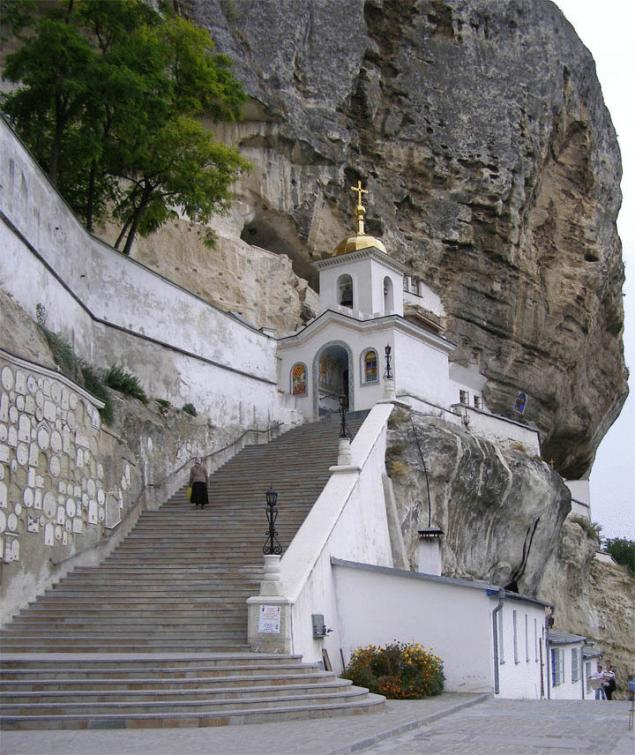
Now in the cave temples of the monastery again conducted a Church service for both locals and visitors from other cities and countries of the CIS. Newly built staircase leads to the upper tiers and in the cells, a restored cave Church of the Dormition and bell tower with a Golden dome, a restored rock icon painted above the balcony of the assumption Church. Life unique cave monastery continues.
Source: /users/117

The monks who settled on the steep cliffs, was not looking for privacy, and had been a missionary and brought to the local tribes, the light of Divine Revelation. It seems that a higher power really was guarding the monastery, which had survived the earthquake, and the Turkish invasion, and the attacks of foreigners. Soon, near the monastery arose the capital of the Crimean khanate – the beautiful city of Bakhchisarai. By the early twentieth century Uspensky monastery has grown and consisted of five churches and numerous monk cells.

Here the rocks were hollowed out of the sacristy, a refectory, a library with a rich collection of spiritual books and manuscripts. There was also a hotel for pilgrims, two fountains for the coolness and delight of the eyes, also, two Church cemetery. The cemetery, one military, the other fraternal was situated in the rocks in three tiers. The top tier was decorated with marvelous wall paintings on various biblical subjects. They were up in the rocks and to see them, we had to climb a steep staircase of 83 steps. And from the height it was possible to admire Gefsimansky chapel and a wonderful orchard, which was broken by diligent monks. With the arrival of the Bolsheviks in 1921, the assumption monastery was closed and transferred to a labor camp. Unique buildings of world-historical significance, was taken for building materials and part of the temples were destroyed. Did not spare the rock monastery and the earthquake in 1927. That did not destroy nature and people, have rendered service during the great Patriotic war – in the surviving cells found shelter many wounded soldiers, and in the refectory was equipped with a hospital. But the real revival of the monastery began in 1993 with the efforts of the Abbot of Silwan and several ascetic monks. The restoration and reconstruction carried out with funds collected literally bit by bit from numerous parishioners.

Now in the cave temples of the monastery again conducted a Church service for both locals and visitors from other cities and countries of the CIS. Newly built staircase leads to the upper tiers and in the cells, a restored cave Church of the Dormition and bell tower with a Golden dome, a restored rock icon painted above the balcony of the assumption Church. Life unique cave monastery continues.
Source: /users/117






